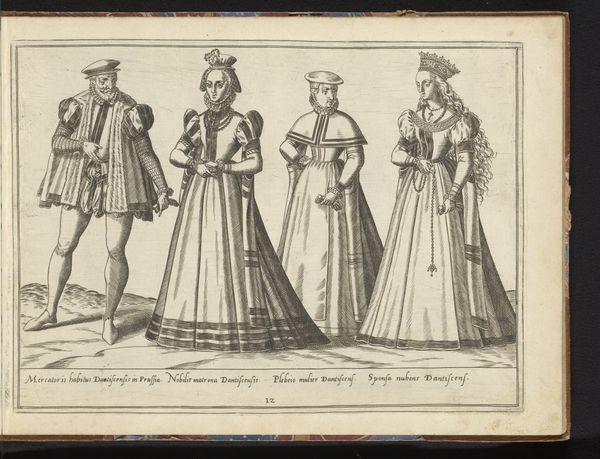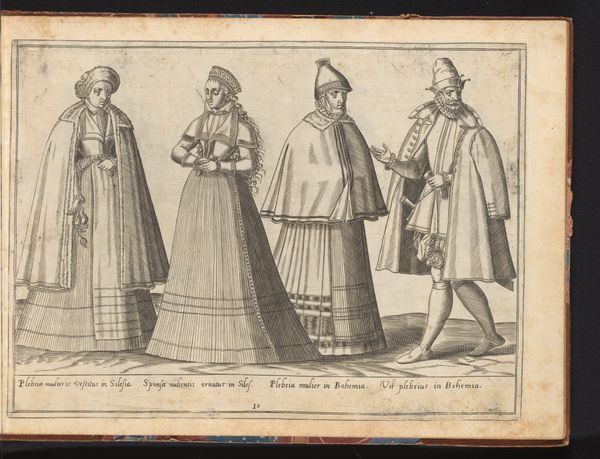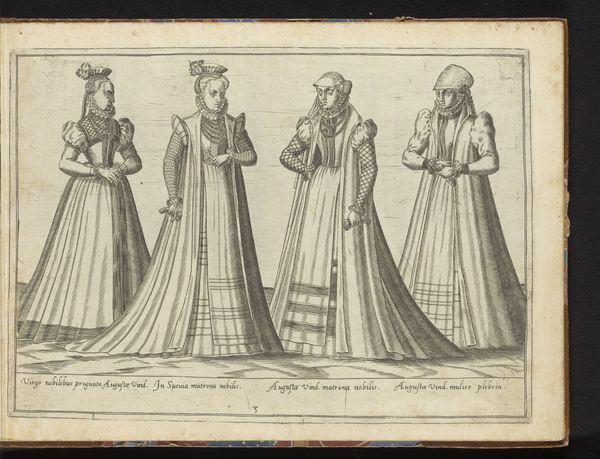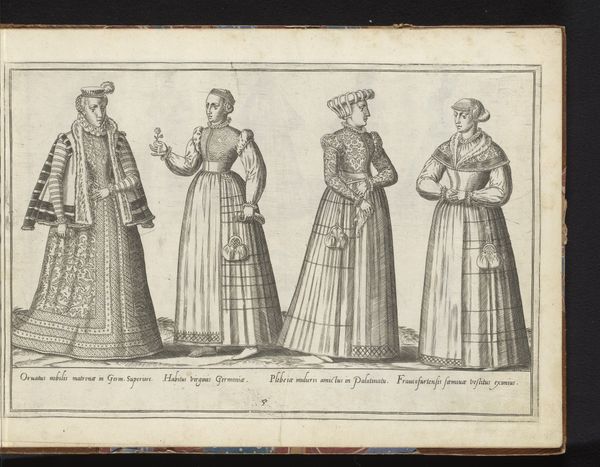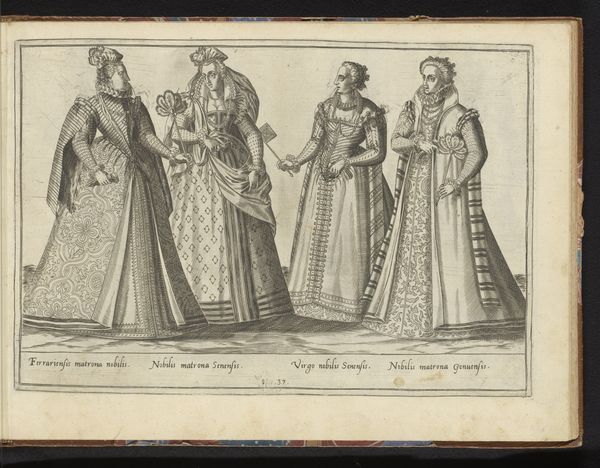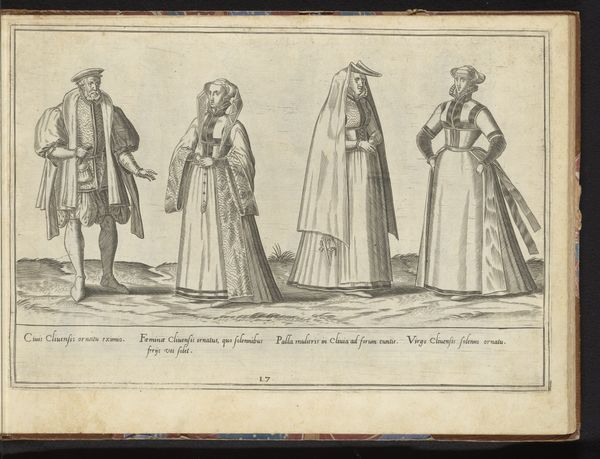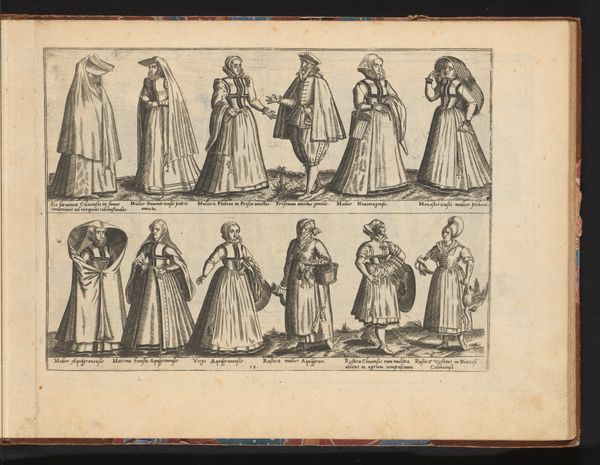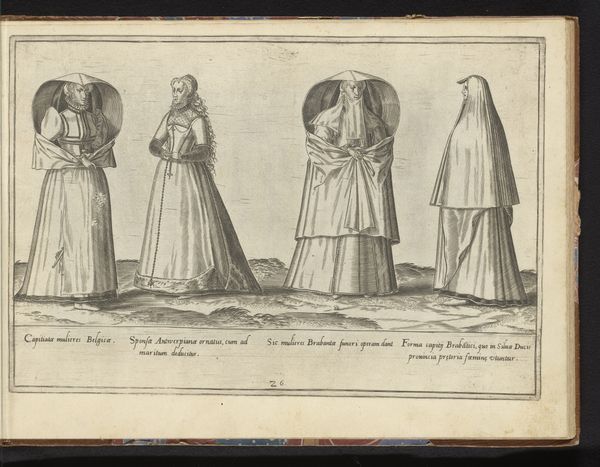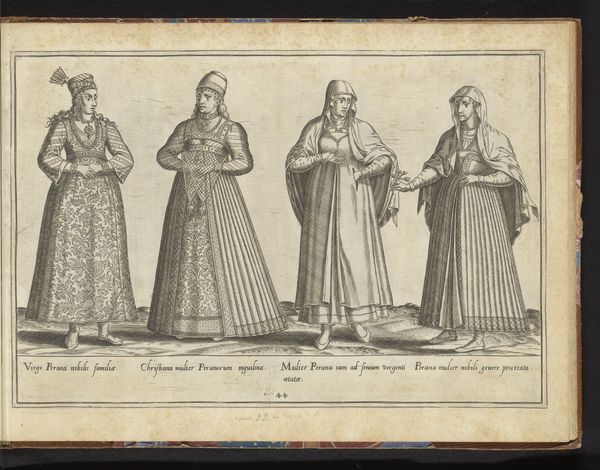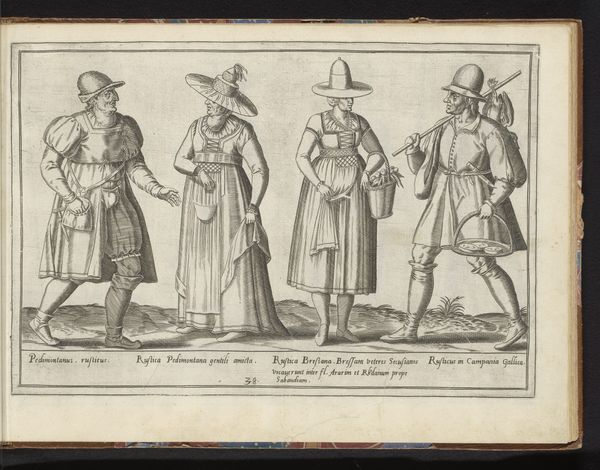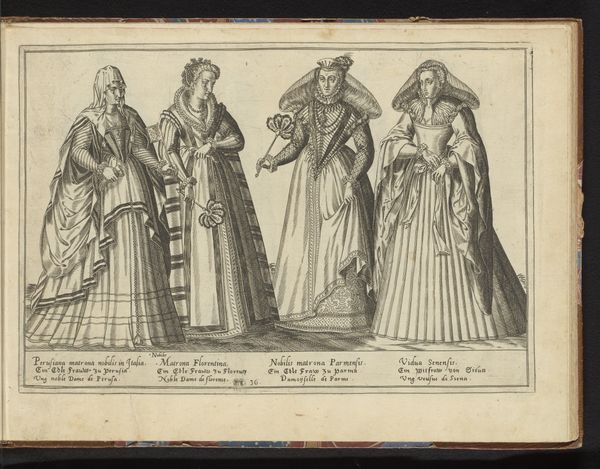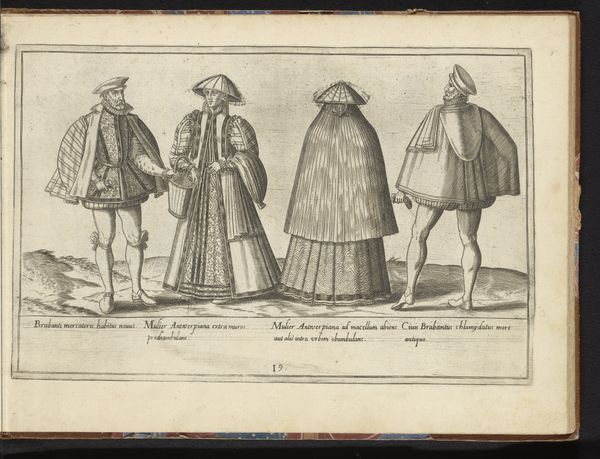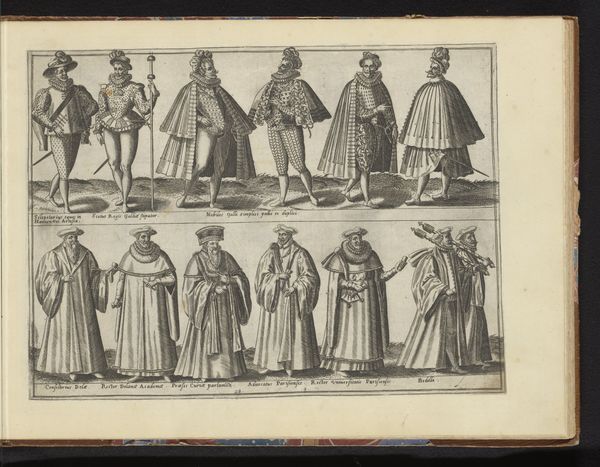
Vier vrouwen, gekleed volgens de mode uit Neurenberg, ca. 1580 1581
0:00
0:00
print, engraving
#
portrait
# print
#
figuration
#
11_renaissance
#
coloured pencil
#
genre-painting
#
northern-renaissance
#
engraving
Dimensions: height 265 mm, width 360 mm
Copyright: Rijks Museum: Open Domain
Curator: Here we have "Four Women, Dressed According to the Fashion of Nuremberg, around 1580," made in 1581 by Abraham de Bruyn. It's a fascinating print, residing here at the Rijksmuseum. Editor: My first thought is how stoic they appear! Rigid postures, averted gazes... It evokes a very formal, almost detached feeling. And the sheer detail in the fabrics, captured only in engraving, is remarkable. Curator: Indeed. Consider how clothing, especially at that time, visually declared social standing and cultural identity. The image almost operates as an early form of fashion reportage, doesn’t it? Each element from headwear to the cut of the gowns signifies particular messages. Editor: Precisely. The layers of detail—the embroidery patterns, the variations in headpieces... These weren't simply clothes. Each conveyed very specific signals in the stratified society of Nuremberg. It speaks of power and privilege, literally woven into the very fabric of their presentation. Curator: The lack of individualized features directs us instead to their social roles. You said stoic before, but maybe "iconic" fits, too? Each woman is positioned more as a representation, a signifier within a well-defined cultural script, instead of expressing a sense of her subjective self. The expressions seem molded to convey piety, serenity, status... all qualities expected in upper-class women. Editor: Do you think that's intentional on the artist’s part or representative of the cultural mores constricting their self-expression? Curator: A bit of both, perhaps! The composition focuses less on individual characteristics and leans toward establishing type, in service of a kind of social cataloging. Yet, their distinctness is critical; differences signal different roles and status. Editor: Looking closely at the intricate detailing in the textile patterns, you start to consider the layers of artisanship –the workshops needed to produce clothing of this status. It gives you insight into the socioeconomic strata operating within Renaissance Nuremberg. Curator: The symbolism isn't overtly religious, though undoubtedly interwoven in every part of their lives. It really reflects values such as propriety, hierarchy, wealth, marriage and generational continuity, and ultimately contributes to an image of Nuremberg society. Editor: It’s compelling how a seemingly straightforward fashion plate offers so much depth once you begin interpreting the encoded messages it sends! I had dismissed this artwork but find myself now, unexpectedly drawn to how much can be gleaned from dress alone. Curator: Right! And I find myself thinking about how visual representation, across mediums, solidifies and disseminates standards. These images served a practical and ideological function, making them invaluable for understanding the era.
Comments
No comments
Be the first to comment and join the conversation on the ultimate creative platform.
